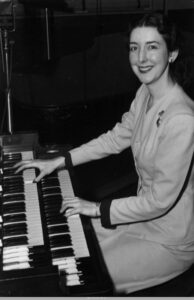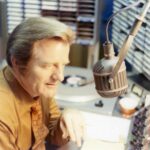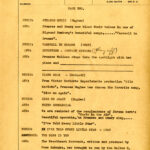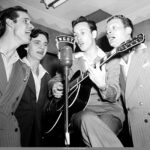Radio in the Television Age

For the first three decades of its existence, radio was the undisputed center of much of family entertainment in the United States. Prominently featured in living rooms across the country, radio was the source of news, radio-plays, and music. The image of a family circled around to listen to their radio is well-known. With the invention of television, that began to change.
Large-scale production of television sets began in 1948, but was limited until after the Korean War in 1952. As televisions became more affordable and advertisers flocked to the new medium, radio stations had to quickly adapt to the changing field. Stations stopped using live in-studio performances, instead playing less expensive recordings. This also cut down on employment budgets, as a single disc jockey could play records, read advertisements, and make news announcements.
Another important change in radio was the creation of “format radio.” Station managers developed rules to give their station a specific personality. These rules focused on consistency, and included how many songs to play and of what genre, what station IDs should sound like, and how many commercials to have. This allowed increased specialization, giving the station a unique sound. Stations also focused more on their local community, running contests and reporting local news. Elmo Ellis of WSB helped guide stations into the new age with his writing on “Radio Rust Removers” in 1952. With the changes, radio remained relevant even as television broadcasting boomed.



